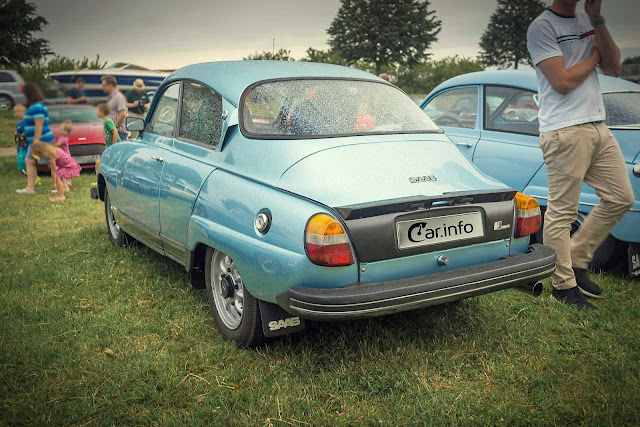The Saab 96 is an automobile manufactured and marketed by Saab from 1960 to January 1980, replacing the 93. The 96 featured aerodynamic two-door bodywork, four passenger seating and at first a two-stroke, three-cylinder engine, later a four-stroke V4.
The Saab 96 had a longitudinally mounted engine layout. As first designed, it had a 841 cc, 38 hp (28 kW) three-cylinder Saab two-stroke engine. (The two-stroke option was offered until 1968). By 1965 this was increased to 40 hp (30 kW). An optional 57 hp (43 kW) version of the engine, with triple carburetors and oil injection, was used in the Sport and Monte Carlo models.
In 1967, Saab began marketing the 96 V4, with the Ford Taunus V4 engine, a four-stroke 1498 cc V4 engine. The ordinary V4 engines produced between 1967 and 1976 had 65 hp (48 kW).
For the Swedish 1976 model year, the car - now known as the 96L - had its power reduced to 62 PS due to new Swedish emission regulations. However, the 1977-1980 GL models had 68 PS (50 kW), due to a two-stage Solex 32TDID carburetor. The V4 96 managed 0–100 km/h in 16 seconds. A total of 547,221 Saab 96s were made. (wikipedia)
1980 Saab 96 GL Jubileum Final Edition
Limited to 300 copies. Metallic Aquamarine Blue, blue/black plush interior, feature a sports steering wheel, front spoiler and special alloy wheels. Built to commemorate the last edition of the Saab 96 and the 25th anniversary of Saab's import to the Netherlands. Each of the 150 units allotted for the Netherlands has a plaque with the edition number attached on the dashboard. Interior is brown.
For the 150 units of the "Jubileum" allotted for the Netherlands to commemorate the 25th anniversary (1954-1979) of the import of Saab to the Netherlands, there is a plaque on the dashboard with the edition number. Brown plush interior.
(Photos from vellingebilcenter.se, car.info, garaget.org, commons.wikimedia.org)


























































